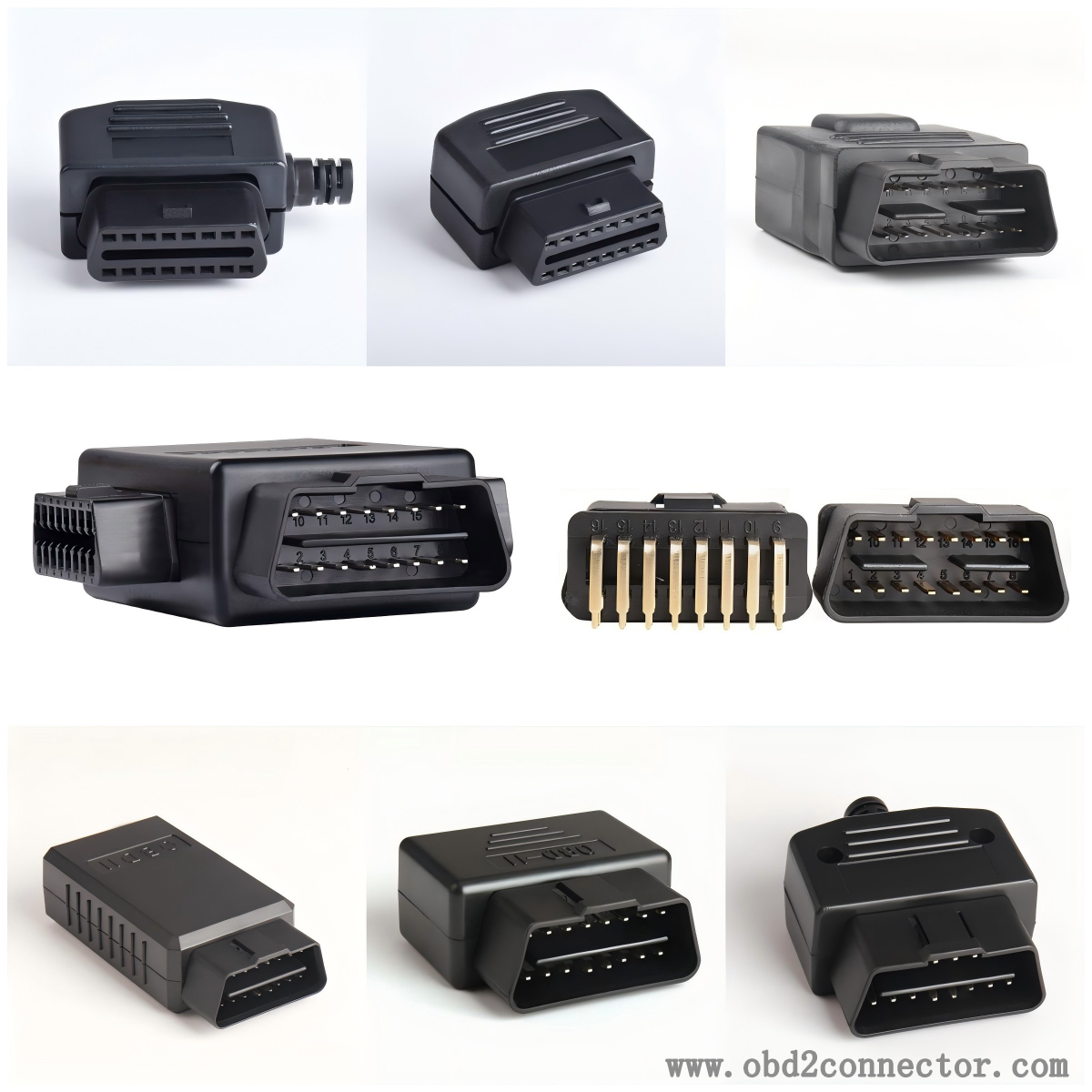The correct usage of OBDII connectors
The correct use of OBDII connectors includes connecting devices, selecting appropriate software, correctly interpreting data, and processing after use. The following is a specific introduction:
Choose appropriate diagnostic equipment: Based on the brand, model, and specific diagnostic needs of the vehicle, select OBDII diagnostic equipment that is compatible with it. There are various types of diagnostic devices available on the market for selection, such as professional car maintenance diagnostic instruments, portable fault code readers, and OBDII adapters that connect to mobile phones or tablets via Bluetooth or WiFi. Ensure that the selected device supports the OBDII communication protocol used by the vehicle.

Find the location of the OBDII connector: The OBDII connector is usually located in the driver's cabin of the vehicle, and the specific location may vary for different vehicle models, but it is usually located in a relatively easy to access area for connecting diagnostic equipment.
Connect diagnostic equipment: With the vehicle turned off, accurately connect the plug of the diagnostic equipment to the OBDII connector. Ensure that the plug is securely inserted to avoid communication failures caused by poor contact. Some diagnostic devices may need to be initialized or set up after connection, and operated according to the device's instructions.
Turn on the vehicle power: Turn on the vehicle ignition switch, but do not start the engine (some diagnostic operations may require starting the engine, according to specific needs). At this point, the diagnostic equipment will automatically establish communication with the vehicle's electronic control unit (ECU) and begin reading relevant information about the vehicle.
Select diagnostic function: Based on actual needs, select the corresponding diagnostic function from the menu of the diagnostic equipment, such as reading fault codes, clearing fault codes, viewing real-time data, conducting special function tests, etc. For example, if the vehicle's fault indicator light is on, first select the read fault code function to determine the specific cause of the fault.
Interpretation of diagnostic results: The data and information obtained by diagnostic equipment need to be interpreted correctly. Fault codes usually have specific meanings and can be queried through the device's built-in fault code manual or online database to understand the specific description and possible causes of the fault. For real-time data, it is necessary to understand the normal range of each parameter in order to determine whether the various systems of the vehicle are working properly. If the diagnosis result is uncertain, it is recommended to refer to the vehicle's maintenance manual or consult a professional car repairman.
Perform corresponding actions: Take appropriate measures based on the diagnosis results. If it is a simple malfunction, such as a sensor failure, it can be replaced or repaired according to the maintenance manual. For some complex faults, further in-depth inspection or seeking the help of professional maintenance personnel may be necessary. If the fault is resolved, use diagnostic equipment to clear the fault code and recheck the vehicle for any other potential issues.
Post use processing: After use, turn off the diagnostic device first, and then disconnect it from the OBDII connector. Properly store diagnostic equipment for future use. At the same time, ensure that the surrounding environment of the OBDII connector of the vehicle is clean and prevent debris from entering the interior of the connector, which may affect its performance.